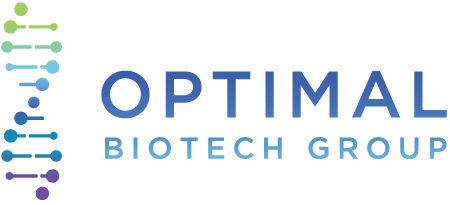Process Analytical Technology (PAT) has quickly become an integral component within the pharmaceutical and chemical manufacturing industries, providing timely quantitative measurements throughout production to measure critical quality attributes and parameters. In October 2004, the U.S. Food & Drug Administration (FDA) announced a Process Analytical Technology (PAT) approach for pharmaceutical manufacturers in their Guidance for Industry PAT — A Framework for Innovative Pharmaceutical Development, Manufacturing, and Quality Assurance. If you are involved in a PAT project, or are simply interested in learning more about PAT, our latest blog is intended to provide you with an understanding of the fundamental aspects.
Background
Over the past few decades, the development of key process analytical enabling technologies, including computer hardware, multivariate analysis, and process automation have provided multiple opportunities for value-added PAT applications across a wide range of industrial sectors. It is clear that many industries have made critical contributions to process analytics, thus positioning it as a competitive tool for process control, process understanding, continuous improvement, and quality assurance across all stages of a product’s lifecycle.
If you think about PAT, there are several ways to deconstruct the subject. One is the process, the second is the analytical, the third is quality systems, and the fourth is regulatory. On the process side, we see process models that can be used to predict performance along with control schemes that can enable making real-time decisions. On the analytical side, it is the robust methods that enable real-time decisions. For the quality systems side, these are the systems that support the whole application that you are planning to create. And finally, the regulatory side includes the filing for the new products, as well as dealing with the post-approval changes you may be making within the design space.
Definition and goal of PAT
Process Analytical Technology, as defined by the United States Food and Drug Administration (FDA), is a mechanism to design, analyze, and control pharmaceutical manufacturing processes through the measurement of critical process parameters that affect critical quality attributes of an active pharmaceutical ingredient (API). PAT is an umbrella term that covers a range of tools and is often cited as being an important component of other innovative initiatives, such as quality by design, real-time release, and continuous manufacturing. More specifically, PAT is an ancillary technique which allows for detection of events that cannot be derived from conventional variables (i.e. temperature, pressure, and flow rate). In order for PAT to be effective, successful implementation involves the use of different technologies to support the physical, chemical, and mechanical properties of the various manufacturing processes. Moreover, it is a testing and feedback loop which allows for process adjustment based upon thorough knowledge of how various components and related processes affect a final product.
Using specialized tools
In order to implement successful PAT-based measurement and control, a process department requires specialized tools:
- Analytical instruments
- Chemometric modelling tools
- Software for PAT method development
Among the PAT tools that are largely being used in the pharmaceutical industry are Raman spectroscopy, NIR (near-infrared) spectroscopy, and terahertz pulsed spectroscopy technologies. Raman spectroscopy, which is the primary tool on which we will focus, has been increasingly used for real-time measurements of critical process attributes. The fact that non-destructive measurements can be made without sample preparation has resulted in its successful implementation in continuous manufacturing.
The output from these types of devices/tools is usually spectral data, which needs to be processed through a chemometric model to predict the critical quality attribute of interest. The final piece of the puzzle is a PAT management software platform that is required to manage data and integrate the PAT instrument with other data and control solutions.
Benefits for PAT applications
The Raman effect was first observed in 1928 by C.V. Raman, and has been extensively studied, generating an immense body of scientific literature. This scientific foundation enables a deeper, molecular level understanding of the manufacturing process and provides confidence to both the manufacturer and regulatory authorities.
Raman spectra
The in complex mixtures to be identified and analyzed. For chemical species, features of interest can often be identified in isolation from interfering features from other materials allowing simultaneous monitoring of large chemical species and the use of robust univariate prediction models. Furthermore, the large amount of chemical information present in a typical Raman spectrum can provide a better understanding of the process at a molecular level.
Aqueous samples, slurries, solids, liquids and gases
With NIR and mid-infrared spectroscopy, water has a very strong absorption and as a result obscures the signal from the materials of interest in aqueous environments. The Raman spectrum of water is very weak, and normally does not interfere with the spectra of the materials in solution. As a result, this is one of Raman spectroscopy’s primary advantages when compared with infrared (IR) absorption methods.
Sampling flexibility
In theory, all that is required to obtain a Raman spectrum is to shine monochromatic laser light on a sample and collect/analyze the resulting scattered light. There are several possible configurations to achieve this. Fiber optic delivery of the laser light and collection of Raman light is especially suitable for PAT applications. Fiber optic cables which could be several tens of meters long may be used to connect a central Raman instrument to remote parts of a production line. A compact and robust non-contact probe, such as Tornado’s Hudson 785, allows for easy integration for assorted sampling arrangements.
Raman analyzers designed for PAT-type applications are available with up to 8 channels on the production line to be monitored sequentially with the sake spectrometer.
It is also worth mentioning that Raman spectra may readily be obtained through windows (usually quartz or sapphire) or from samples inside sealed-glass containers. Optics are available with a working distance of typically a few centimeters. The flexibility with which Raman spectroscopy can be employed also increases the potential for integration with other analytical techniques and, therefore, increases the amount of information obtained from the sample.
Conclusion
This concludes our overview on the fundamental aspects of PAT. In our next blog, we will go deeper into the specific application areas of Raman spectroscopy as a PAT tool and provide you with best practices.
If you would like to discuss your application and are considering adopting Raman spectroscopy as a process analytic technology, please contact us at info@tornado-spectral.com
Source: Tornado Spectral Systems

